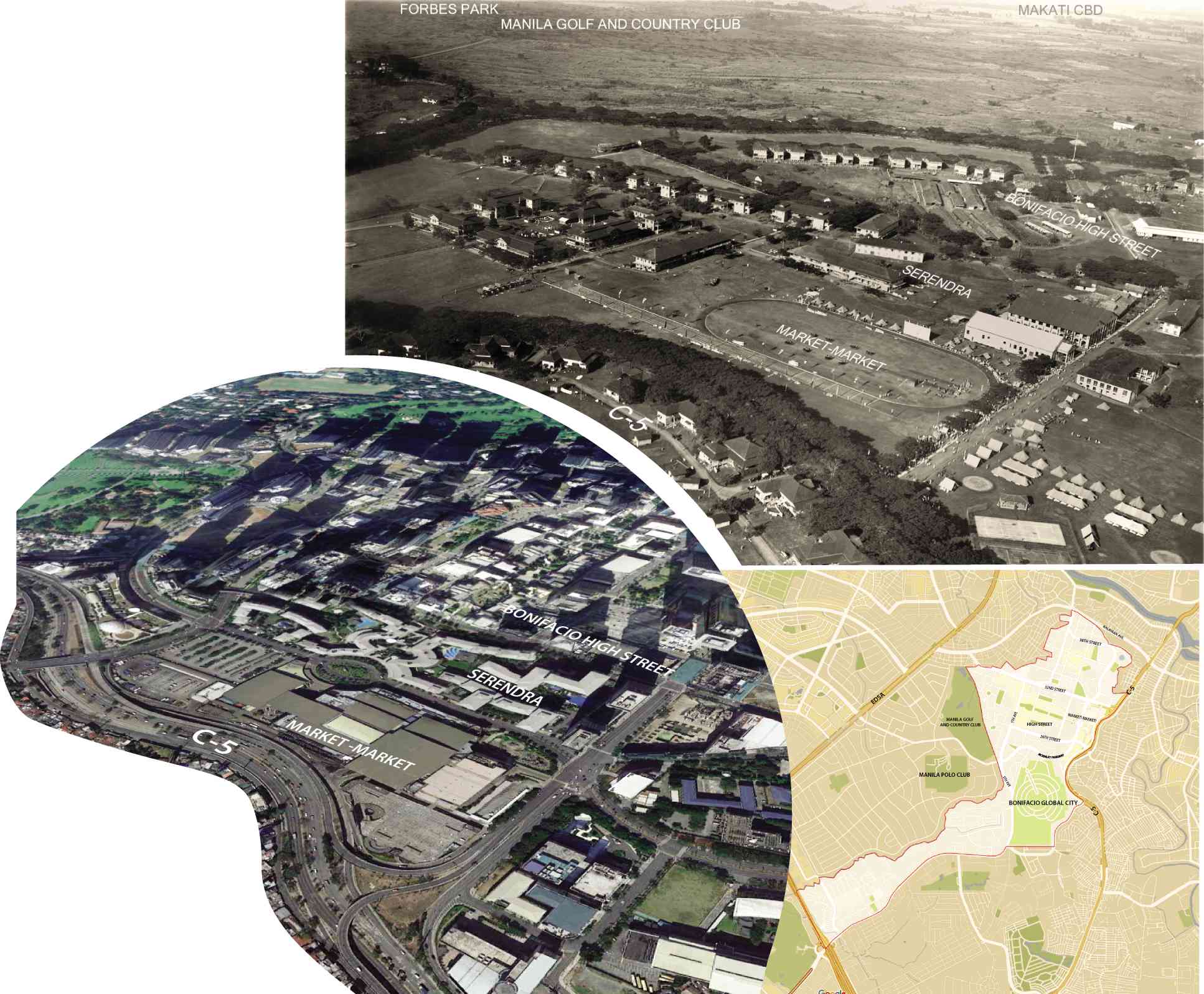Revolutionizing Fort Bonifacio
1949
Year when Fort McKinley, former name of Fort Bonifacio, was turned over by the US government to the Philippines
240
Area in hectares of Bonifacio Global City
P33,000
Winning bid, per square meter, submitted in 1995 by Metro Pacific consortium for the right to develop Fort Bonifacio
P8 billion
Cost of the new Senate headquarters that will be built in Fort Bonifacio
Once a vast military reservation, Fort Bonifacio has rapidly grown into a prime business district and trendy urban center since the massive commercial development and privatization in the 1990s.
History
The United States government acquired the land in 1902 and operated it as a military base. Originally named Fort McKinley after former US President William McKinley, it served as headquarters of Philippine Scouts, the Philippine Division of the United States Army.
In 1949, three years after the Philippines’ independence from the US, the property was turned over to the Philippine government. Then President Carlos Garcia, through Proclamation No. 423 issued in 1957, established the area as a military reservation.
It became the headquarters of Philippine Army and was renamed Fort Bonifacio after Andres Bonifacio, known as “Father of the Philippine Revolution.”
In 1992, then President Corazon Aquino signed Republic Act No. 7227 that created the Bases Conversion and Development Authority (BCDA), which was mandated to transform former military bases into alternative productive civilian use. Under RA 7227, part of the proceeds from the sale of Fort Bonifacio should be used for the modernization of the Armed Forces of the Philippines (AFP).
President Fidel Ramos later issued Executive Order No. 40 that put under the BCDA some 240 ha of Fort Bonifacio.
Upscale community
In 1995, the Metro Pacific Consortium won the right to develop Fort Bonifacio after submitting the highest bid of more than P33,000 per square meter.
In the early 2000s, Ayala Land Inc. partnered with the Campos family’s Evergreen Holdings to take over Metro Pacific’s stake in a joint-venture with the BCDA to develop the 240-ha land into what is now the upscale commercial-residential community Bonifacio Global City (BGC).
BGC boasts of residential landmarks like the European-inspired community Serendra, the retail block type shopping mall Bonifacio High Street and the interactive and state-of-the-art Mind Museum.
It has also been the address of choice for many businesses, from multinational firms, including leading BPO corporations to top local companies. One such development is the Bonifacio Stopover Corporate Center, which is a highly urbanized destination within the e-Square IT Zone, where locators are entitled to tax incentives.
In February last year, the Philippine Stock Exchange (PSE) opened a unified trading floor at its new headquarters located at the 5th St. corner 28th Ave in BGC. Its new building, dubbed as the PSE Tower, has an external ticker board on its façade that displays real-time stock prices and market data.
In March, construction of the future home of the Philippine Senate, formally started with a ground-breaking ceremony at a 1.8-ha property at the Philippine Navy Village in Fort Bonifacio.
The 11-storey building, designed by American engineering and architectural firm Aecom, costs P8 billion and is set to be completed by 2022.
Fort Bonifacio is also the location of several township projects such as Megaworld Corp.’s McKinley West and Uptown Bonifacio. Recently, Megaworld teamed up with BCDA have to create and jointly manage Bonifacio Capital District (BCD), a 160-ha new urban hub in the southern part of the former Fort Bonifacio military camp.
Sources: Inquirer Archives, bcda.gov.ph, dpwh.gov.ph, bgc.com.ph ayalaland.com.ph

